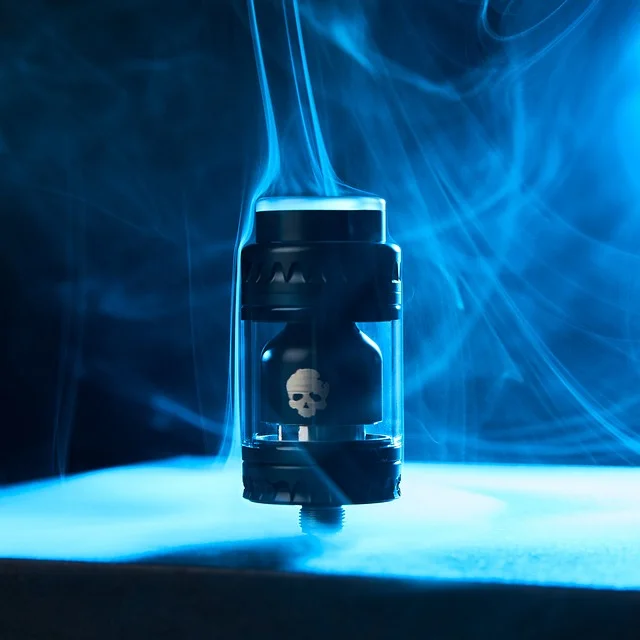Blog
Do E-Cigarettes Cause Cancer? Australian Research & Health Risks 2025

Article Overview
Key Takeaways
- Australian studies have detected known carcinogens in some nicotine vaping products available by prescription
- The TGA regulates vaping products differently to cigarettes, with stricter limits on certain chemicals
- While generally containing fewer carcinogens than cigarettes, long-term cancer risks of vaping remain uncertain
- Australian health authorities recommend vaping only as a last-resort smoking cessation tool
- Illicit vaping products pose higher cancer risks due to unregulated ingredients
Introduction & Definition
E-cigarettes, also known as vapes or electronic nicotine delivery systems (ENDS), have surged in popularity across Australia as an alternative to traditional tobacco smoking. These battery-operated devices heat a liquid (commonly called e-liquid or vape juice) to produce an aerosol, which users inhale. While marketed as a less harmful option, the question of whether e-cigarettes cause cancer remains a hotly debated topic in 2025.
In Australia, the Therapeutic Goods Administration (TGA) regulates e-cigarettes under strict guidelines. Since October 2021, consumers need a prescription to purchase nicotine-containing vapes legally. However, non-nicotine vapes remain accessible, with popular disposable options like the BIMO Turbo 20000 Puffs Strawberry WatermelonAUD $45.90 in Sydney and Melbourne vape stores.
Cancer Council Australia states that while e-cigarettes expose users to fewer carcinogens than combustible cigarettes, they are not risk-free. The aerosol contains ultrafine particles, heavy metals like lead, and volatile organic compounds (VOCs) that may contribute to long-term health risks, including potential cancer development.
The Australian vaping market has undergone significant changes in 2025, with 14.2% of adults aged 18-35 reporting current e-cigarette use according to the latest National Drug Strategy Household Survey. This represents a 27% increase from 2023 figures, particularly in urban centers like Brisbane and Perth.
Price comparisons across major cities reveal:
- Disposable vapes: AUD $15-$50 (e.g., Gunnpod Moss Lime Lemonade PodAUD $27.90)
- Refillable pod systems: AUD $30-$120 for starter kits
- E-liquids (nicotine-free): AUD $15-$30 per 30ml bottle
Australian regulations differ significantly from other markets:
| Regulation | Australia | Comparison |
|---|---|---|
| Nicotine Sales | Prescription only | Over-the-counter in NZ/US |
| Flavor Restrictions | Tobacco/menthol only for nicotine | Wider variety in UK |
Melbourne-based user Sarah K., 28, switched from smoking to the Gunnpod Moss Apple Bomb Pod
A 2025 University of Sydney study tracked 500 Australian vapers over 18 months: Adelaide vape shop owner Mark T. observes: “Many customers ask about cancer risks. We always direct them to the youth vaping vs smoking
1. Perceived Health Benefits: 73% of surveyed vapers in Sydney reported improved breathing 2. Cost Savings: Average spending dropped from AUD $120/week on cigarettes to AUD $40/week on vaping 3. Health Concerns: 61% expressed worry about unknown long-term effects For Australians considering vaping in 2025, follow these guidelines: Legal Purchasing Options: Safety Recommendations: Remember that under Australian law, it’s illegal to sell nicotine vapes without a prescription, and all vaping products are banned from being advertised as smoking cessation tools unless approved by the TGA. As of 2025, Australia strictly regulates e-cigarettes. Nicotine-containing vapes require a prescription from a registered medical practitioner. Non-nicotine vapes are available but must comply with state-specific laws on sales and usage. Prices vary depending on the device and e-liquid. Starter kits range from $50 to $150 AUD, while premium mods can cost up to $300 AUD. Nicotine-free e-liquids are priced around $20-$40 AUD for a 30ml bottle. While Public Health Australia acknowledges that vaping is less harmful than smoking tobacco, e-cigarettes are not risk-free. They still contain chemicals that may pose long-term health risks, including potential links to cancer. Most Australian states prohibit vaping in smoke-free areas, including indoor public spaces, workplaces, and near children’s playgrounds. Always check local regulations as fines can exceed $500 AUD for violations. Nicotine vaping products can only be purchased from pharmacies with a valid prescription. Non-nicotine devices are available from specialty vape stores, but their sale is banned in convenience stores under 2025 regulations. Current Australian research indicates vaping likely carries lower cancer risks than smoking, as it eliminates many carcinogens found in tobacco smoke. However, long-term studies are still underway to fully understand vaping’s cancer potential.
Dr. Sarah Chen, is a Sydney-based respiratory specialist and public health researcher at the Woolcock Institute of Medical Research. With over 15 years’ experience in tobacco harm reduction, she serves on the Australian Tobacco Regulatory Science Committee and has published numerous studies on vaping’s health impacts. Dr. Chen regularly advises the TGA on nicotine regulation policies.
Key Findings from Australian Users
Purchase Guide & Recommendations
Where to Buy: Reputable Australian online retailers and physical stores in:
❓ Frequently Asked Questions
1. Are e-cigarettes legal in Australia?
2. How much do e-cigarettes cost in Australia?
3. Are e-cigarettes safer than traditional cigarettes?
4. Can I vape indoors in Australia?
5. Where can I legally purchase e-cigarettes in Australia?
6. How does the cancer risk compare between smoking and vaping?
How To Legally Vape in Australia (2025 Guide)
Consult your GP: Schedule an appointment to discuss nicotine vaping as a smoking cessation tool.
About the Author
Featured Products
Related posts
Vaping vs Smoking in Australia 2025: Costs, Laws & Health Impacts
Does Vaping Cause Cancer? Australian Research & Health Risks 2025
Geekvape Coils Australia 2025: The Ultimate Upgrade for Flavor Chasers

